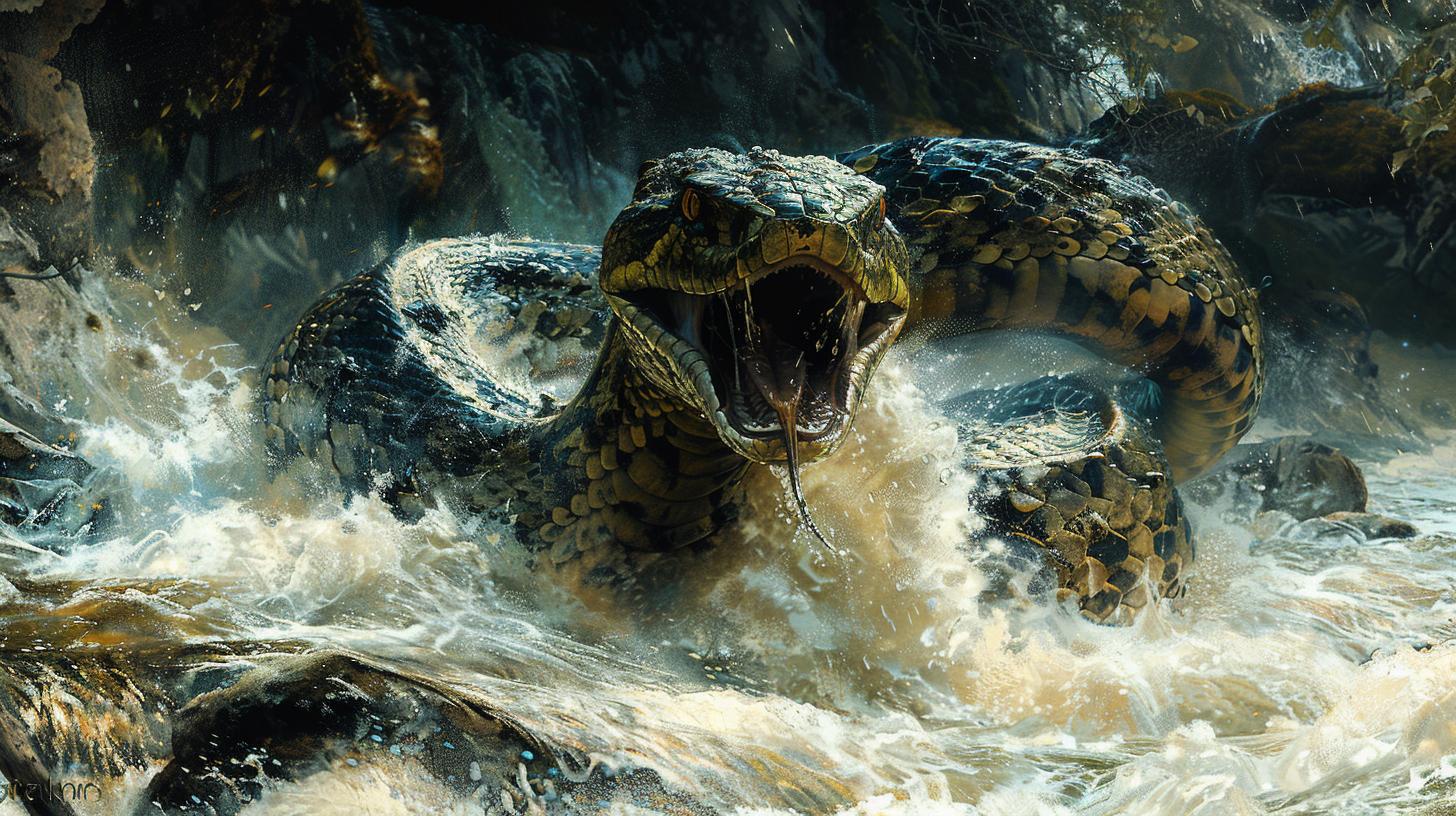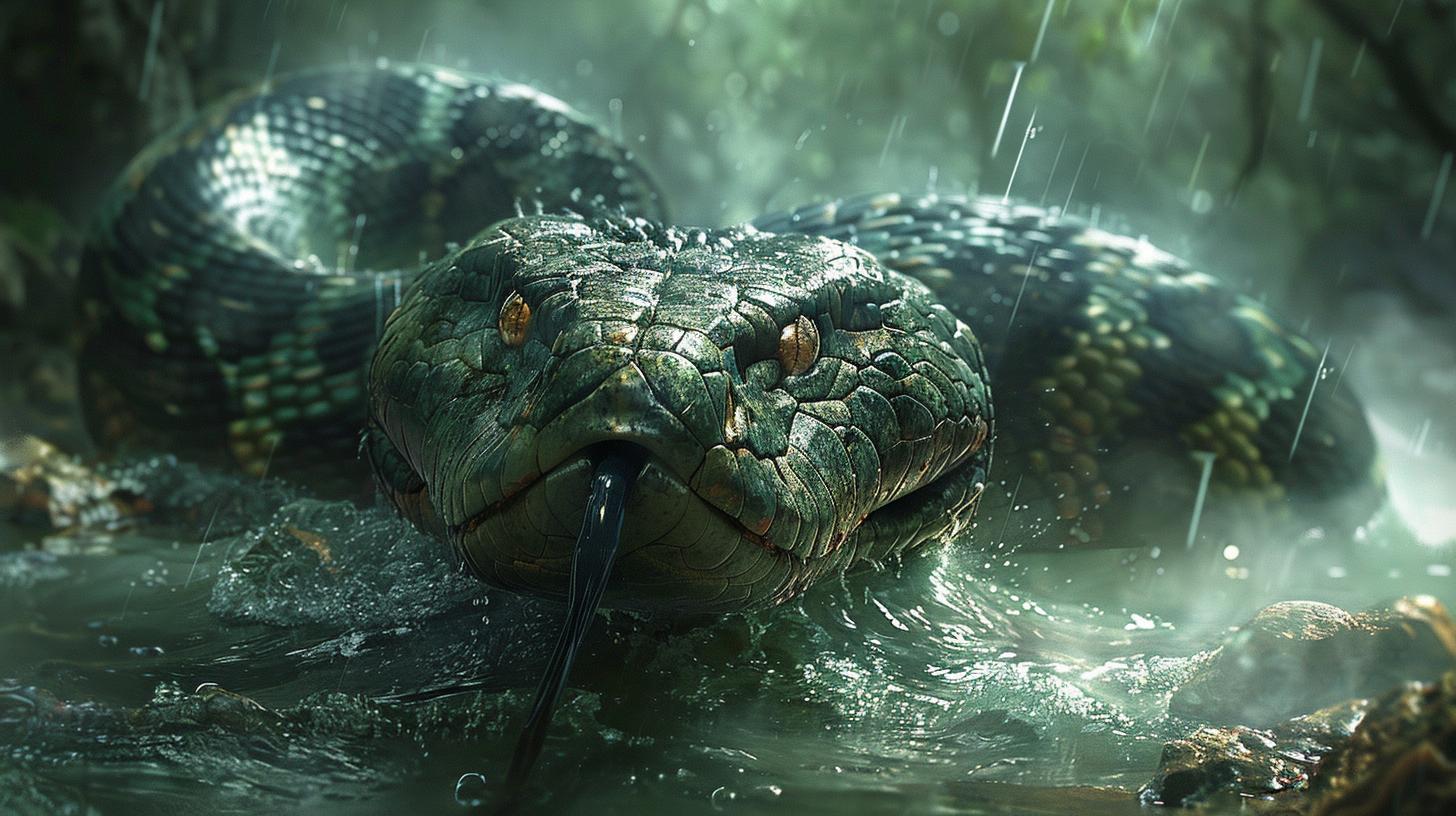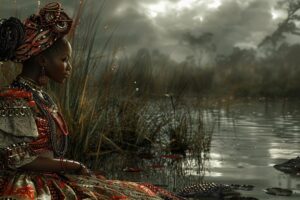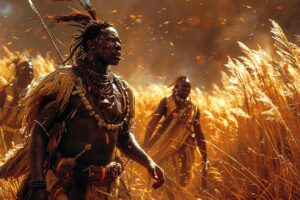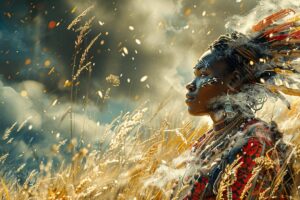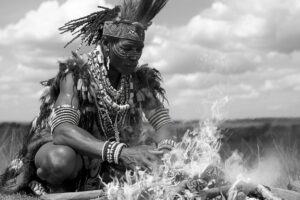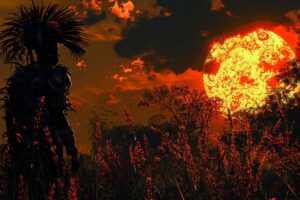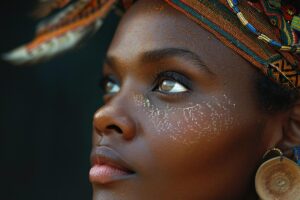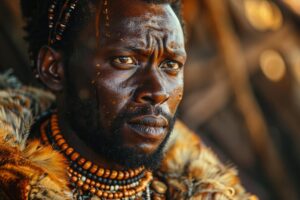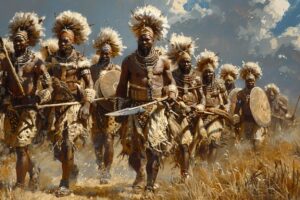Inkanyamba Snake Mythology: Unraveling the Legend of the Mythical Serpent
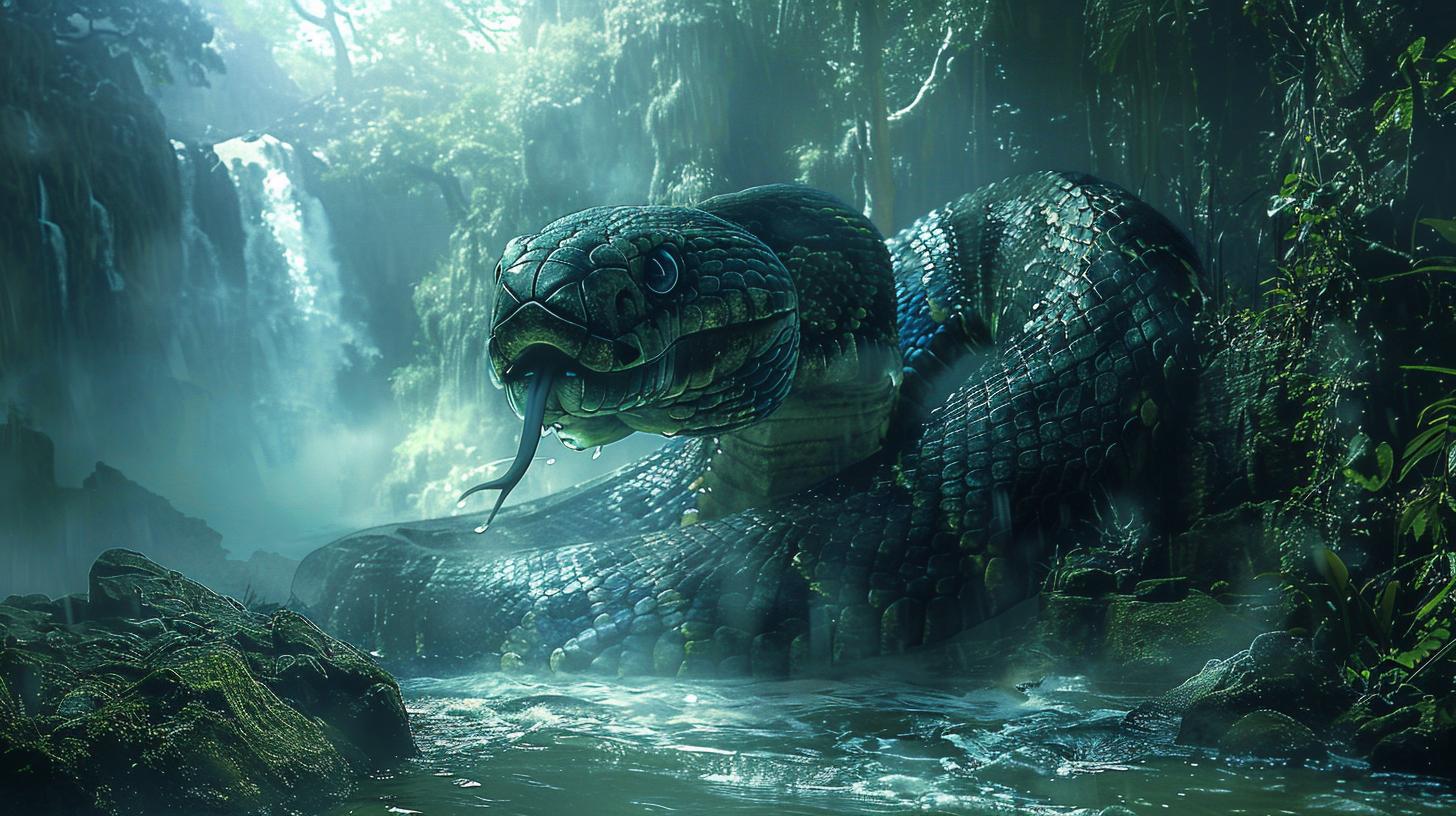
The Inkanyamba Snake Mythology is a longstanding African legend tied to Pietermaritzburg, South Africa. It revolves around Inkanyamba, a mythical serpent believed to dwell near Howick Falls. The creature’s characteristics, supernatural powers, and impact on the region’s weather are key elements of this captivating myth.
This article will explore its cultural significance, historical roots, and modern-day sightings, shedding light on the enduring legacy of the Inkanyamba Snake Mythology.
The Legend of Inkanyamba
The Inkanyamba Snake Mythology is deeply rooted in the cultural heritage of South Africa. Over generations, this legendary serpent has captivated the imagination of locals and visitors alike, weaving a complex tapestry of beliefs, folklore, and spiritual connections.
Description of Inkanyamba
Described as a formidable creature of immense size and power, Inkanyamba is revered for its extraordinary characteristics and supernatural abilities.
Physical Characteristics
- Large serpent with equine head and horse-like mane
- Aquatic habitat in lakes and rivers
- Potential length exceeding 20 feet
Supernatural Abilities
- Ability to influence seasonal storms and weather patterns
- Believed to evoke massive tornadoes during summertime
- Perceived as a mystical being with awe-inspiring powers
Role in Seasonal Storms
The Inkanyamba is linked to the onset of seasonal storms, with its presence believed to trigger turbulent weather conditions that impact the region.
Connection to Zulu Beliefs
Within Zulu culture, the myth of Inkanyamba holds a prominent place, shaping beliefs, rituals, and spiritual practices that honor and fear this legendary serpent.
Influence on Zulu Culture
- Pervasive presence in Zulu folklore and oral tradition
- Inspiration for rituals and ceremonies
- Symbol of nature’s power and unpredictability
Spiritual Importance
- Role in mythic narratives and religious practices
- Conduit for spiritual connections to nature
- Significance in ancestral teachings and cultural identity
Inkanyamba in Mythological Artifacts
The presence of Inkanyamba in mythological artifacts holds significant cultural and historical value, offering insights into ancient beliefs and traditions. This section delves into the various depictions and interpretations of Inkanyamba in different forms of artistic expression.
Rupestrian Representations
Rock art portraying Inkanyamba serves as a visual record of the creature’s significance in indigenous cultures. These ancient depictions showcase the creature’s distinctive features and showcase its role in local beliefs.
Interpretation and Symbolism
The interpretation of Inkanyamba in rupestrian representations often relates to themes of nature, power, and spirituality. Symbolically, the serpent embodies primal forces and natural phenomena, reflecting the fears and reverence of ancient societies.
Historical Significance
The historical importance of Inkanyamba in rock art lies in its portrayal as a mythical being associated with water and the natural world. These artifacts offer a glimpse into the spiritual beliefs and cultural practices of past civilizations.
Depictions in Folklore
Throughout folklore, Inkanyamba’s image has evolved, adapting to the changing narratives and societal contexts. These stories reflect the ongoing fascination with this legendary serpent and its enduring presence in the collective imagination.
Evolution of the Myth
The evolution of Inkanyamba’s depiction in folklore parallels shifts in cultural narratives and artistic representations. From ancient tales to modern interpretations, the serpent’s myth has continued to captivate and intrigue audiences.
Regional Variations
Regional variations in Inkanyamba folklore highlight the diverse cultural influences and interpretations of the serpent across different communities. These unique perspectives shed light on the multifaceted nature of this legendary creature.
Modern Encounters and Sightings
Exploring the contemporary reports and testimonies involving the legendary Inkanyamba serpent sheds light on its enduring presence in local lore. From firsthand experiences to eyewitness encounters, these documented incidents provide a glimpse into the ongoing fascination with this mythical creature.
Reported Incidents
- Guardaparkes Andhelezi Buthelezi
- Caretaker Johannes Hlongwane
Eyewitness Testimonies
Testimonials from individuals such as Proprietor Bob Teeney and other locals offer valuable insights into the perceived encounters with the Inkanyamba. Their accounts add a personal dimension to the broader narrative surrounding this enigmatic entity.
Scientific Interpretations of Inkanyamba
Exploring the enigmatic nature of the Inkanyamba serpent has led scientists to delve deeper into the realm of cryptozoology and comparative biology. Various theories attempt to shed light on the creature’s origins and potential real-world counterparts.
Comparative Analysis
- Anguilla Species Comparison
- Academic Debates
Researchers have drawn parallels between the mythical Inkanyamba and known species of eels, particularly Anguilla marmorata and Anguilla mossambica, due to shared physical traits and habitats.
Academic circles engage in ongoing debates regarding the existence and nature of the Inkanyamba, with proponents of different theories arguing for either a supernatural entity or a misunderstood creature.
Cryptozoological Theories
- Folklore vs Reality
- Mythical Creatures in Science
Examining the intersection of folklore and reality, cryptozoologists investigate whether the Inkanyamba is purely a myth or a cryptid waiting to be discovered by modern science.
By studying mythical creatures like the Inkanyamba, scientists gain valuable insights into cultural beliefs, wildlife conservation, and the boundaries between reality and legend.
Inkanyamba Myths Around the World
Explore the fascinating realm of Inkanyamba myths beyond South Africa. These legends have transcended borders, resonating with cultures worldwide and forming intriguing connections across continents.
Cross-Cultural References
- Similar Serpent Legends
- Global Folklore Connections
Similar Serpent Legends
Many cultures around the world have their own stories of mythical serpents resembling the Inkanyamba. From the Chinese dragon to the Norse Jormungandr, these creatures often symbolize power, mystery, and the forces of nature.
Global Folklore Connections
The Inkanyamba’s influence extends far beyond Africa, intertwining with diverse folklore traditions. Whether as a guardian of waterways or a harbinger of storms, the serpent’s presence echoes across different mythologies, highlighting shared themes of respect for nature and the unknown.
Popular Culture Influences
- Inkanyamba in Media
- Impact on Popular Imagination
Inkanyamba in Media
From books to films, the Inkanyamba has left its mark on popular culture. Whether portrayed as a benevolent protector or a fearsome adversary, these representations shape how the serpent is perceived by audiences globally, adding layers to its mythic legacy.
Impact on Popular Imagination
The allure of the Inkanyamba transcends geographical boundaries, sparking the imagination of storytellers and artists worldwide. Its enigmatic nature and supernatural attributes continue to captivate audiences, inspiring new narratives and interpretations that enrich the tapestry of global mythology.
In this final section, we reflect on the essential aspects of the Inkanyamba Snake Mythology that have been explored throughout the article. These key points encapsulate the cultural, historical, and folkloric significance of the legendary serpent:
Continuing Legacy of Inkanyamba Mythology
- The enduring presence of Inkanyamba in South African folklore.
- Its impact on local beliefs and traditions over generations.
Impacts on Popular Imagination
- How Inkanyamba’s mythology has influenced arts, literature, and media portrayals.
- Its role in shaping the collective imagination of the region and beyond.
Overall Reflection
As we conclude our journey through the intriguing world of Inkanyamba Snake Mythology, we acknowledge the enduring legacy and cultural significance of this mythical serpent.
Its representations in art, folklore, and modern encounters highlight the deep-rooted connection between mythology and the human experience, inviting further exploration and interpretation.
.

